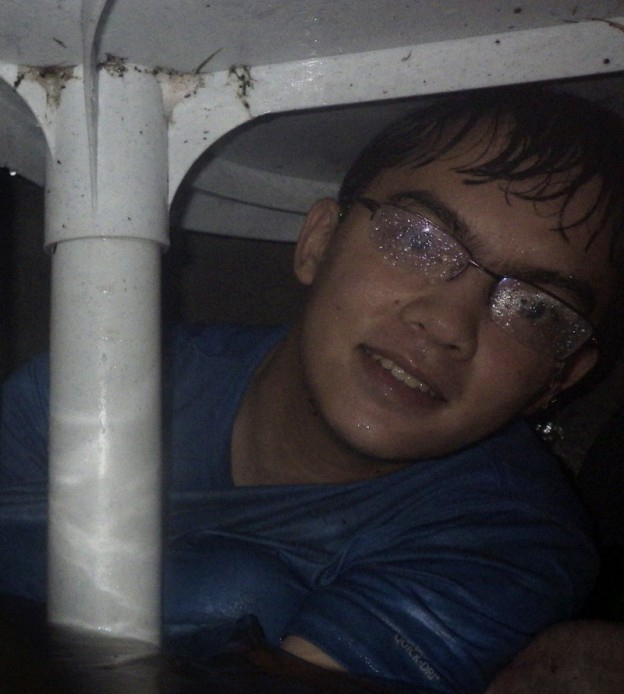Friday, November 8, 2013 – continued:
Underneath the table, Elder Oakes and I were extremely concerned that the water might continue to rise and jeopardize the relative safety that we had managed to secure. I watched through the door into the bathroom to see where the water level was on the tile wall.
At about this time, we could hear that our apartment was being torn apart around us.
After we had been in the water for some time, I could see that Elder Oakes was beginning to shiver in the cold, muddy ocean water that was flowing around us. I told him that he should pull his stretchy shirt that he was wearing at the time over his legs while he had his knees pulled up to his chest. We also tried to stay as submerged as possible so that the wind coming through the apartment wouldn’t chill us.
Continuing to watch the water level on the tile wall in the next room, we noticed that the water had stopped rising. At this point, Elder Oakes and I were relieved of our greatest fears concerning our predicament. The wind continued to roar over, past, and through the apartment, and there was still a possibility that we might lose the roof, but we were comforted to know that we weren’t going to be risking drowning for the remainder of the storm.
Note: The storm surge of a tropical cyclone is caused by the severe decrease in atmospheric pressure at sea level. In the same way that water can come up through a straw when pressure above the liquid is reduced, the ocean rises beneath a tropical cyclone. The difference being that instead of just over a straw, the pressure is reduced over the entire storm, centering on the eye of the storm. The lowest pressure in the storm system when it hit the Philippines was centered directly over my area. The worst flooding, however, occurred in Tacloban City, to the north. This happened because this giant upwelling of water or storm surge that was being pulled along by the storm was forced into Leyte Gulf, which is shaped like a funnel. This gulf gathered the entire storm surge and directed it into Tacloban City.
Elder Oakes and I continued to wait out the storm in the water beneath the plastic table as the water level slowly receded. After an hour or so (I entirely lost track of time at this point, it might have been longer) there was still a lot of water at about 2.5 ft deep. The water went down much slower than it came up. At this point we decided that it would be unwise to remain in the cold water. The wind had probably died down enough that if the roof hadn’t been blown off by that point, it wouldn’t be coming off any time soon. So we got out of the water and sat on the table for the rest of the storm (probably two more hours).
Once the water had gone down to less than a foot, Elder Oakes and I decided to venture out from the room in which we had weathered the storm and investigate the damage that the rest of the apartment–and all of our possessions–had taken.

